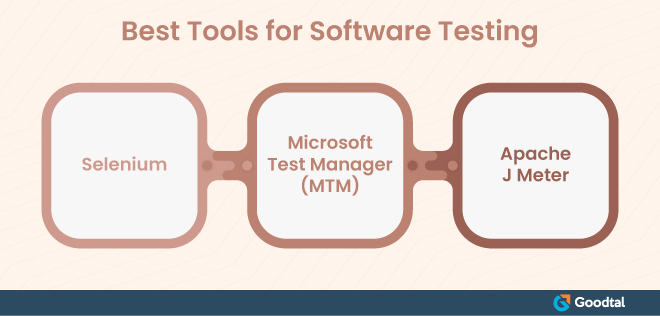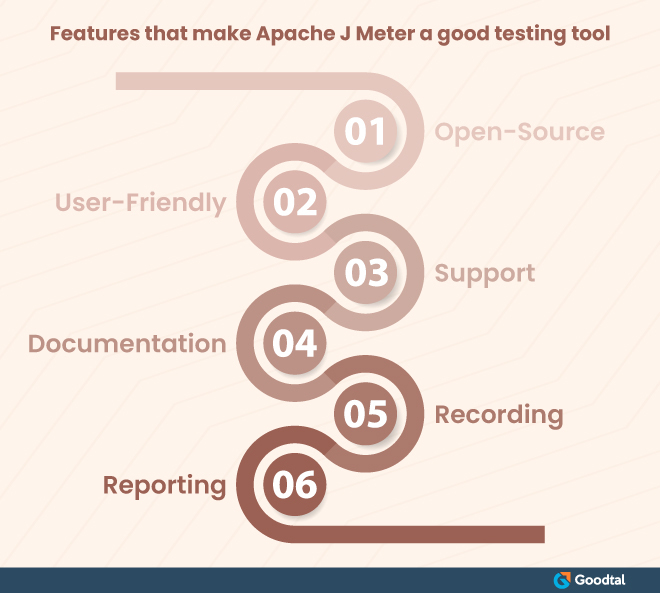
Testing is an essential part of the Software Development Life Cycle (SDLC), and without proper testing, the code will have many bugs, which will hamper the deployment of code for a long time. All projects must have a dedicated Software Testing & Quality Assurance team, ensuring the code is free of bugs and can be deployed on-site.
The QA team ensures that the software is according to design and technical specifications. The purpose of Software Testing and Quality Assurance is not just about finding faults in the software but improving efficiency, usability, and accuracy.
There are Two Types of Software Testing
1. Manual Testing
As the name suggests, testers test the code manually without using any automation tool. The testing team checks the entire code for unexpected outcomes by imitating the end-user. There are different manual testing stages, including unit testing, integration testing, system acceptance, and integration testing.
2. Automation Testing
Automation testing uses a script that tests the original code, thus automating the entire process. Automation testing re-runs the manual scenarios repeatedly and quickly. Automation testing can also be used to test the code from load performance and stress points of view. Automation testing improves the performance of the code and saves a lot of time & money.
Software Testing Techniques
White Box Testing
In this, the tester has access to the source code, and it is made sure that all internal operations are being done according to specifications.
Black Box Testing
In Black Box testing, the tester does not have access to source code and is done at the interface without bothering about the internal logical structure of the software.
Levels of Software Testing

Unit Testing
A level of software testing process where each unit is tested to ensure that all of them are working as expected individually.
Integration Testing
In this level of testing, all the individual units are tested as a group. The aim is to determine whether there are faults when individual units interact with each other.
System Testing
A level of testing, where the entire unit is tested as a whole to ensure that it works as it was designed to, without any unexpected behavior, and is in compliance with the specifications.
Acceptance Testing
In this level of testing, the software is tested for acceptability, to evaluate the system’s compliance with business requirements and whether it is ready for delivery.
Here are some real-world examples, which prove that testing is one thing you cannot do away with in the Software Development Life Cycle(SDLC).
- In 2014, Flipkart, an Indian eCommerce firm, announced, Big Billion Sale but was unable to handle the traffic, resulting in downtime
- In 2015, Royal Bank of Scotland could not process about 600,000 payments due to a software bug and was fined 66 million pounds
- In May 2021, the popular app TikTok experienced a glitch, which showed the wrong followers count
- In November 2021, Tesla had to recall 12,000 vehicles after a glitch was detected in its self-driving beta software
Best Tools for Software Testing

Selenium
Selenium is an automation tool that is open-source enables test automation of websites/apps on different browsers and operating systems. It is compatible with several programming languages like Java, JavaScript, C#, and Python. Testing can be done faster by automating repeated test cases using this selenium framework.
Selenium 4 is the latest version of the automation testing tool, and it has come up with several new features like IDE and W3C compliance to make programming efficient and faster. When integrated with CI/CD pipeline, it can also help with a robust and bug-free release deployment pipeline.
Components of Selenium
Selenium WebDriver (Selenium 2.0)
Selenium’s core is Selenium WebDriver, an interface to write instructions that work interchangeably on different browsers.
Selenium WebDriver enables direct interaction with browsers through automation test scripts. The browser supported by Selenium includes Mozilla Firefox, Google Chrome 12.0.712.0, Safari, Internet Explorer and Opera version 11.5 & above. Selenium supports Windows, Linux, macOS, and Solaris Operating Systems.
Selenium IDE
It is a complete Integrated Development Environment for testing. It can be used for recording and editing functional tests. Selenium IDE can be installed as a Mozilla Firefox add-on and Google Chrome extension. It uses a scripting language called Selenese, which is exclusive to Selenium. A Selenese script is generated for every interaction which is made with the browser. Selenese provides commands for performing actions like clicking a link and selecting an option in the browser.
Selenium Client API
Selenium Client API was introduced to allow users to use different scripting languages other than Selenese. Languages currently supported by Client API include C#, Ruby, JavaScript, R, and Python. A new API was introduced with Selenium 2.0 with WebDriver as its primary component. The old API, which makes use of class Selenium, is still supported.
Selenium Remote Control
Selenium Remote Control (RC) is based on Java and has a Client-Server architecture, where Selenium RC is the server and clients are browsers. Selenium RC receives commands from the client via the HTTP protocol. However, with the launch of Selenium 2.0, Remote Control has lost its prominence to Selenium WebDriver.
Microsoft Test Manager (MTM)
MTM can be used to organize test plans and cases and to do manual testing. It is specifically created for testers to interact with other members of the team. Microsoft Test Manager allows team members to track, execute, plan and analyze track cases. MTM integrates with Team Foundation Server(TFS) to provide increased visibility in a project.
Microsoft Test Manager gave Microsoft all the essential tools to go from a development solution to a complete Application Lifecycle Management(ALM) solution. This was one last thing needed to get the entire team to communicate via TFS rather than with 3rd party synchronizers.
Microsoft Test Manager allows test cases to be exported to Excel, and this is the most significant plus point of Microsoft Test Manager, which enables its users to send test cases in Excel sheets to clients for acceptance of the software. MTM supports Black Box testing, wherein the testers do not have access to source code and perform tests by using the interface. The most significant disadvantage of MTM is that one needs to have Visual Studio installed.
All the actions performed during the test, including buttons clicked, are recorded in a .txt file, making it easier to repeat the tests conducted earlier and recheck the performance. MTM also provides exploratory testing where you can see on-screen how many tests have been successful and how many have failed.
For automating a test case in Microsoft Test Manager (MTM), follow the steps mentioned below
- Creating Test Suites MTM and then assigning test cases to them
- Automate the TFS test case by linking it to a test method in Visual Studio
- Creating and configuring XAML & TFBuild definitions
- Queuing the new build definition
- Creating a lab environment for the automated test
- Configuring the run settings to specify which build definition the environment is to be used
Apache J Meter
Apache J Meter is a load testing tool with a specialization in web applications. It can also be used as a primary monitoring tool. Apart from that, Apache J Meter can also be integrated with Selenium, which allows it to perform automation testing along with load testing. Its architecture is based on plugins, and most of its innovative features are implemented via plugins.
J Meter works by simulating a group of users and sends requests to the target server and thus generates statistics that show the performance, and functionality of the target server.
Here are some tests that can be performed using Apache J Meter
1. Performance Testing
In Performance testing, the stability of a computer program or network is monitored by increasing or decreasing the load by measuring its speed, responsiveness, and performance
2. Spike Testing
It is all about changing the load from very low to high in short bursts and monitoring the performance of the code before going back to the average load. Such testing is essential for eCommerce sites, which receive heavy traffic during holidays and sales.
3. Unit Testing
Unit testing measures the performance of the smallest testable part of a software program. It can be used to test processes and protocols like HTTP, JMS, LDAP, and JDBC.
Features that make Apache J Meter a good testing tool

Conclusion
All three tools discussed have their advantages and shortcomings. Testers should evaluate the requirements of testing a particular software code and decide which one to go for. In some cases, more than one tool may be required to do comprehensive testing.
For finding the best talent for your Software Testing & Quality Assurance tasks, you can depend on Goodtal.
